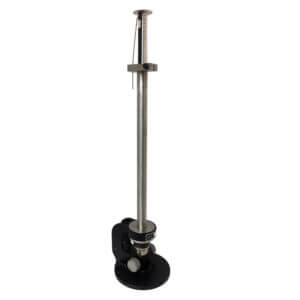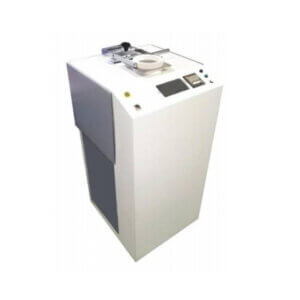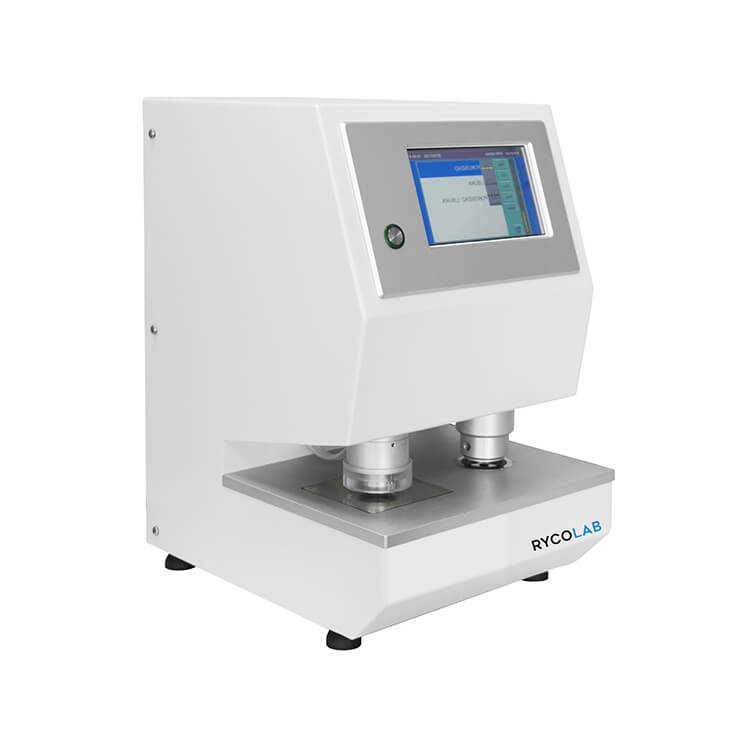Descripción
- High Pressure Densometers are the accepted standard for measuring the porosity, air-permeability or air-resistance of materials having low permeability.
- Typical materials include coated papers, plastics and membranes.
- High Pressure units are recommended whenever a standard unit would yield excessive measurement times.
- Manual and automatic units available. Conform to TAPPI T-536-88 and ASTM D-726-58, Method B.
Specifications
The densometer test measures the time required for a specific volume of air (2.5cc to 30cc), at a constant pressure of 12.33 inches W.C., to flow through a standard area of the material being tested. The air pressure is supplied by a weighted inner cylinder floating freely within an outer cylinder which is partially filled with oil to act as a seal. The sample material is held between clamping plates having a circular orifice area of 1.0 square inch (standard).High pressure units are recommended whenever a standard unit would yield excessive measurement times. Porosity readings with the high pressure densometer are much faster than those taken with a regular densometer. This difference can be as great as twenty-five times faster since higher air pressure is used and air volumes are one-tenth those measured with a standard densometer. Readings also can be affected by using different adapter plates with smaller orifices on all models.
Conversion of Models Containing Mercury to Oil
The new oil-filled high pressure densometers replace older mercury-filled models yet feature identical performance, continued reliability and accuracy. The only difference is the physical height of the unit (27″ with inner cylinder down).Obsolete Models 4120 & 4200 contain mercury which may pose personal safety hazards. These instruments can be converted to oil by replacing the entire upper cylinder assembly. The conversion must be performed at our Troy, NY factory and includes packaging for and disposal of the mercury. Please refer to No. 4050-C Product Bulletin for details.
This model measures porosity and air-permeability of materials. It includes a 1.0 square inch clamping plate, adapter and porosity calibration plate. The inner cylinder is graduated to 2.5cc for the first two spaces and thereafter each 5cc for a total of 30cc. Clamping pressure is supplied by turning a knob which raises and locks the lower clamping plate. Order the automatic digital timing attachment and instrument leveling base separately.





